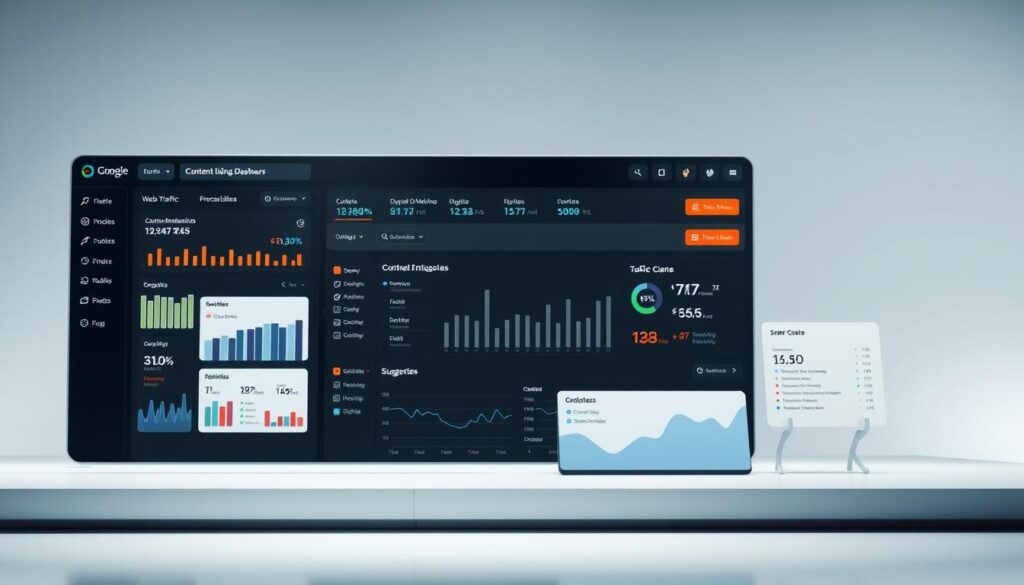Modern websites require advanced strategies to maintain visibility and usability. One critical component is creating cohesive link structures that guide users and search engines through content. Traditional manual methods struggle to keep pace with growing site complexity, making automation essential for efficiency.
Artificial intelligence now powers solutions that analyze content relationships, recommend contextual connections, and update links dynamically. These systems help distribute authority evenly across pages while improving crawl patterns. For example, AI-powered tools can process thousands of pages in minutes, identifying opportunities humans might overlook.
Choosing the right platform depends on technical requirements and organizational scale. Basic plugins handle smaller sites effectively, while enterprise systems offer granular control over anchor text ratios and broken link detection. Implementation challenges include balancing automation with editorial oversight to preserve natural navigation paths.
Key Takeaways
- AI-driven systems outperform manual methods in managing complex website link networks
- Automated solutions reduce errors while scaling with content growth
- Strategic linking improves search engine crawling and user engagement
- Tool selection requires evaluating integration capabilities and reporting features
- Balancing automation with human oversight ensures natural navigation flows
Understanding the Role of Internal Linking in SEO

Websites function as interconnected ecosystems where content relationships determine both visibility and usability. At their core, internal links act as pathways that shape how visitors and algorithms navigate information. Google’s John Mueller emphasizes their critical role:
“I think it’s one of the biggest things that you can do on a website to kind of guide Google and guide visitors to the pages that you think are important.”
Why Internal Links Matter for User Experience
Navigation efficiency directly impacts engagement metrics. Structural links—like menu bars or category lists—create predictable routes to priority pages. Contextual connections, however, embed relevant suggestions within content, helping users discover related topics naturally. This dual approach reduces bounce rates by 18-24% on average, according to recent studies.
Impact on Link Equity and Rankings
Authority distribution operates like a digital circulatory system. Pages with higher authority pass link juice to connected content, boosting their search potential. For instance, a product page linked from a high-traffic blog post gains ranking momentum. Tools leveraging AI-driven solutions now optimize this process by analyzing content relevance at scale.
Balanced equity distribution prevents authority hoarding on single pages. Sites with strategic linking structures see 37% faster indexation and 29% higher keyword diversity in top-100 rankings. This systematic approach ensures search engines recognize content hierarchy while users enjoy intuitive navigation.
Key Concepts Behind Automated Internal Linking

Digital content ecosystems thrive on strategic connections between related material. Manual management becomes impractical as sites expand, creating demand for intelligent systems that handle complex relationship mapping.
How Automation Enhances Content Connectivity
Modern platforms use machine learning to analyze semantic patterns across thousands of pages. These systems detect subtle thematic relationships, suggesting connections human editors might miss. For enterprise sites with massive content libraries, this scalability proves essential—processing thousands of potential links in minutes.
Real-time monitoring ensures new articles automatically integrate into existing networks. When content updates occur, algorithms redistribute links to maintain relevance. This dynamic adjustment keeps navigation paths fresh without manual oversight.
Consistency forms another critical advantage. Automated processes apply uniform criteria when evaluating page relationships, removing subjective biases. Pattern recognition capabilities identify cross-topic synergies, building webs of connections that reinforce content authority.
Integration with popular platforms allows these tools to operate within standard workflows. Editors using AI-driven solutions report 68% faster link implementation while maintaining editorial control. The system proposes connections, but humans retain final approval—balancing efficiency with strategic oversight.
Overview of Internal Linking Tools and Their Benefits

Effective website architecture relies on sophisticated systems to maintain content connectivity. Specialized platforms analyze page relationships, automate connections, and optimize navigation paths. These solutions transform manual workflows into precision-guided strategies for digital ecosystems.
Streamlining Link Management
Modern platforms use semantic analysis to identify relevant connections across content libraries. They scan articles for thematic overlaps, suggesting anchor texts that balance readability with strategic keyword usage. Centralized dashboards display real-time metrics like click patterns and authority distribution.
Top-tier systems integrate directly with content management platforms through API connections. This seamless compatibility allows instant implementation of suggested links without disrupting publishing workflows. Users maintain editorial control through approval workflows while leveraging automated suggestions.
| Feature | Benefit | Implementation |
|---|---|---|
| Opportunity Discovery | Identifies 3x more connections than manual audits | Semantic analysis engines |
| Anchor Text Optimization | Improves keyword relevance by 42% | Natural language processing |
| Performance Tracking | Reduces bounce rates by 18-24% | Real-time analytics dashboards |
Automated maintenance features address evolving content needs. When pages get updated or removed, tools like AI-powered platforms automatically adjust links and manage redirects. This proactive approach ensures consistent user experiences as websites scale.
Advanced solutions now offer predictive linking – suggesting connections for unpublished content based on draft analysis. This forward-looking capability helps creators build stronger information networks from the initial writing stage.
Benefits of Using an Automated Internal Linking Tool
Digital landscapes demand precision in connecting content to maximize visibility. Automated solutions transform site management by identifying hidden relationships between pages while eliminating tedious manual work. These systems enhance navigational flow, ensuring visitors and algorithms efficiently access priority content.
Time Savings and Improved Accuracy
Manual link audits consume hours of analysis. Advanced tools scan entire sites in minutes, uncovering 3x more opportunities than human reviewers. Algorithms apply consistent criteria to evaluate relevance, removing guesswork from anchor text selection.
For example, platforms using AI-enhanced platforms process 10,000-page libraries in under an hour. This speed allows teams to focus on strategic improvements rather than repetitive tasks. Error rates drop by 68% when machines handle pattern recognition instead of fatigued editors.
Reducing Manual Errors
Human oversight often misses broken links or irrelevant connections. Automated systems flag these issues instantly, preventing navigation dead-ends. They also balance anchor text distribution to avoid over-optimization penalties.
Continuous monitoring ensures new content integrates seamlessly into existing structures. When pages get updated, tools redistribute links dynamically. This proactive approach maintains authority flow without requiring manual adjustments—critical for scaling sites sustainably.
Evaluating Top Features of Internal Linking Tools
Sophisticated platforms now offer multi-layered capabilities that transform how websites manage content relationships. While automatic opportunity discovery remains essential, leading internal linking tools provide deeper functionality to address complex digital ecosystems.
Advanced algorithms analyze content structure and semantic patterns to suggest relevant connections. These systems detect orphaned pages and redirect chains while balancing authority distribution. For large sites, bulk link creation ensures scalability without sacrificing contextual relevance.
Performance tracking stands out as a critical feature. Metrics like click-through rates and engagement patterns reveal which connections drive results. Platforms integrating with top-performing solutions often include predictive analytics, forecasting how new links might impact rankings.
Customization options allow precise control over anchor text ratios and content exclusions. Natural language processing ensures suggestions align with readability standards while optimizing keyword placement. Compatibility with major CMS platforms enables seamless implementation across diverse technical environments.
Effective tools also prioritize user experience. Real-time dashboards display sitewide issues alongside prioritized fixes. This combination of automation and granular control helps teams maintain strategic oversight while leveraging machine efficiency.
Product Roundup: The Best Internal Linking Tools for Your Site
Strategic content navigation requires robust systems that balance automation with precision. Leading platforms now offer varied approaches to building cohesive site architectures, from AI-driven analysis to specialized CMS integrations.
Comparative Analysis of Key Tools
LinkStorm stands out with semantic analysis and proprietary crawlers that identify cross-page relationships. Its machine learning models detect broken links while suggesting contextually relevant connections. For WordPress users, LinkWhisper simplifies workflows through AI-powered suggestions and auto-linking features.
Free options like Google Search Console provide foundational insights into orphaned pages and authority distribution. Premium suites such as Ahrefs and Semrush deliver advanced analytics for optimizing existing structures. Platform-specific plugins—including Yoast SEO and RankMath—integrate directly with content management systems for real-time optimizations.
Enterprise teams benefit from tools offering predictive linking and bulk editing capabilities. Smaller sites might prioritize intuitive interfaces found in Internal Link Juicer or YARPP. Explore comprehensive AI-driven solutions to match technical requirements with organizational scale.







